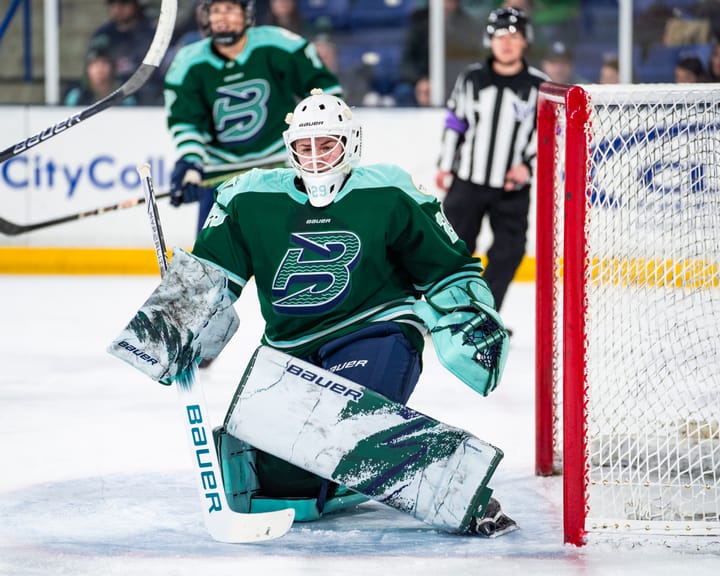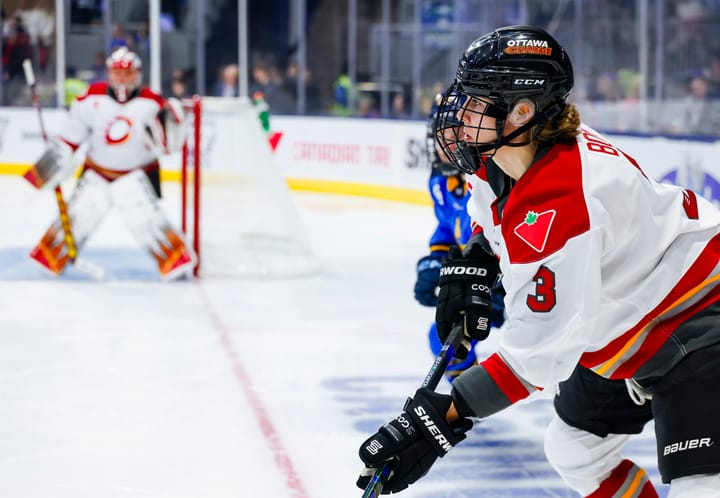Jenelle Kohanchuk on signing in the SDHL, CWHL expansion and more
The former Toronto Furies alternate captain talks about her decision to play overseas and reflects on CWHL expansion.
Moving your life and career across the world is a big decision, and while CWHLers will be going as far as China for league competition this season, some have elected to stand back and assess the changes before re-committing to the league’s ambitious expansion.
Among them are Michela Cava, Kaitlyn Tougas (whom we spoke to last week), and Jenelle Kohanchuk, all of whom will instead be playing in Sweden’s SDHL.
Kohanchuk was a big contributor to a Toronto Furies team that’s already losing Cava and several Olympians to centralization. So while the Furies face a great deal of turnover, Kohanchuk and company look to find a different kind of change with a new address.
The 2014 Clarkson Cup champion spoke with The Ice Garden about her decision to leave the CWHL, in what state the league remains in its upcoming 11th season, how expansion to China is affecting the players, and what lies ahead in her future.
How did you decide to sign with the SDHL?
I like change, and [this season] the CWHL is going to be in a kind of regrouping year, and considering that China is coming in and all the Olympians are off for the Olympic year, I thought it was a good time and opportunity for me. Playing with Swedish Olympians and trying out their culture will be cool.
What it came down to was what decision would leave me with more regret, and if I didn’t go to Sweden, I think I would have regretted that the most. Canada and the U.S. are so dominant in women’s hockey that it’s cool when top level players can go out there and help other countries develop.
Will you return to the CWHL in the future?
Yeah, for sure. Sweden isn’t a long-term thing, it’s trial-and-error. If things go well, who knows, maybe I’ll stay there another year. I do have to think about my future with working in Canada but I see a huge future with the CWHL, with players getting paid and being able to have a good lifestyle with it. I can see myself coming back once the league continues to grow.
Where do you think the CWHL is at in terms of growth and development?
[Expansion] is a huge change within the league [and in previous years] it’s been a challenge to get per diems on the road in other cities. I want to sit back and see what’s going to happen [financially for players]. We’ve always been promised that we’ll be paid -- I know that something is going on this year where players will be paid, we don’t know how much yet -- but it’s not at a point where players can make a career out of [playing hockey].
Is the wage you’ll receive in Sweden better or livable?
It’s not a big wage but it’s something where I’m not going to have to worry about living expenses, travel, and can just focus on hockey and training while I’m there. It will be nice not to have any stressors outside of the rink.
Do you think the transition will be easier with fellow CWHLers playing in the SDHL?
I’m really pumped that Michela Cava (formerly Toronto Furies) and Kaitlyn Tougas (formerly Brampton Thunder) are playing there too -- they’re great people and teammates and I get along with them both. I know a few others who’ve played in the league and who’ve had nothing but good things to say about it and the country.
Did the CWHL’s expansion to China affect your decision to leave?
The biggest thing was that I was just released from the national team before the Olympic year. I’ve had to look at what’s best for me, mentally, physically, and emotionally. Being in Canada while the national team is training, I wasn’t sure if I wanted to be around that environment. I’ll still be cheering on the girls and fully supporting them. But with all the hype around that, I don’t know if I want to put myself in that position.
We’ve had a lot of back-and-forth with the CWHL about China, we haven’t fully known what’s going on with that. There are a lot of players upset [that some players in China will be paid a salary that outsizes anything CWHLers will get]. We’ve been told by the league that things will be equal throughout and everyone will be treated the same, and then China comes in and players are trying to escape to go out there to earn money. It’s tough to build this league in Canada when there isn’t that support within the system.
How would you characterize players’ reactions to expansion?
It’s definitely mixed reaction. I’ve talked to some who are not happy considering that China has been able to sign players [who might have instead played on existing CWHL teams] which leaves fewer top-level draftees available to the North American teams. But I know a number of people who are pumped China is in the league because it’s a travel opportunity and a growth opportunity for women’s hockey.
Did you consider playing for one of the Chinese teams?
I did, but Sweden was the best fit for me. If one of the Chinese teams asked me, I definitely wouldn’t say no.
With the Furies losing some of their best contributors to the Olympics or otherwise, how do you think they’ll fare in 2017-18?
Within that core group of nine or 10 returning players, there’s a lot of determination and leadership. The thing with the Furies is that we’re always the underdog team that will fight back. I really hope they do so because it’s a great group of girls and a good organization.
What will the Furies miss in losing head coach Sommer West this year and were your playing days with her like?
She just started a family so it was no surprise that she stepped down. As a coach, she puts her heart into every single aspect of the team. She hated to see us down and never wanted to lose and did whatever it took to get us on the winning side. I wish her all the best within her family and her life. The Furies will be sad to see her go but it will be great for the team to get a new face in there and to start the process again.





Comments ()